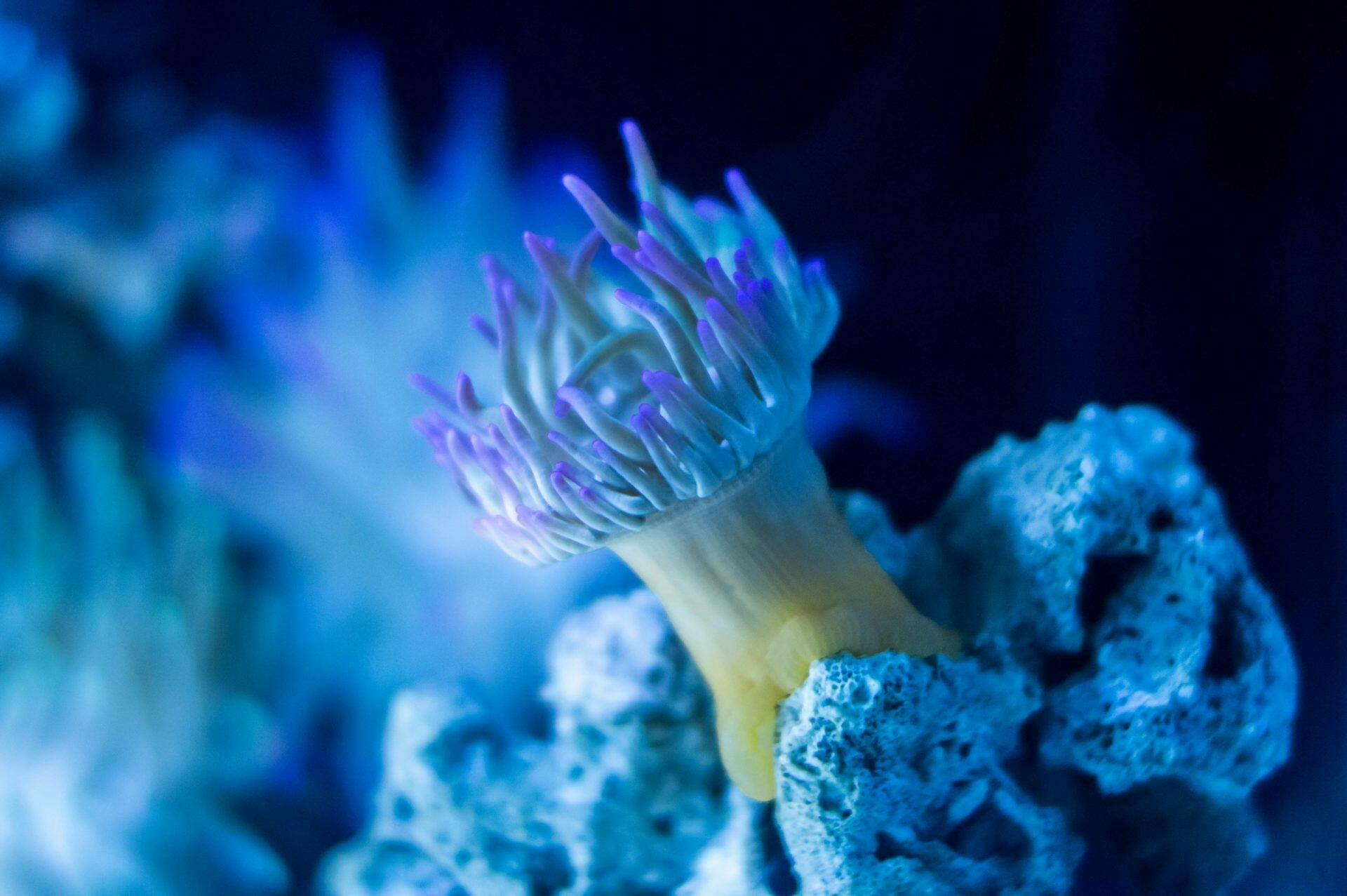
Dynamic Adventures Of An Arksen Owner
A fact-based fictional tale of an Arksen 85 owner joined onboard by a team of marine scientists for a reef research expedition.

I have been waiting for this opportunity for years. Now, amongst some of the most spectacular ocean wilderness I have ever experienced, it’s finally happening, on board my Arksen 85.
All I can hear is silence. Having switched to electric running, we are using battery power to slowly and carefully travel along one of the most remote sections of the Great Barrier Reef. The only disturbance is the gentle parting of water from the hydrodynamically shaped hull as the vessel gently and efficiently eases its way through the ocean.
I have been joined on my yacht by a group of scientists taking part in a research expedition to help build a clearer picture of coral reef dynamics. It is the first of what I hope will be many environmental adventures that my family and I will get involved with, as we are all extremely passionate about the need to save our oceans for the generations to come.
This unique opportunity was opened up through a partnership between Arksen and Yachts for Science, which aligns research groups in need of a vessel with owners like me, who are keen to help and make a difference.
We have been at sea for ten days now, and being part of this research mission has been a real privilege. It has truly proved to be one of those special experiences you cannot get anywhere else.
Low impact operation
Using the advanced platform, we have about 30 miles of electric range, or 10 hours of holding position on station, from the large onboard battery bank. Some days we’ve been using the sun; the 6.5kW capacity PV panels onboard provide a useful contribution to the power requirement, to grab all we can from the long bright North Queensland days. The 200kW generators can also kick in when needed, charging us up in about an hour, with sound shields and an anti-vibration system making it barely audible when it’s running.We’re currently on our way to the next dive point, one of the many locations we have plotted on a large nautical chart of the area that gets rolled out each evening to help put together the plan for the following day.The boat’s GPS guidance system will pick out the exact spot with pinpoint accuracy and, once we arrive, the captain will kick on the boat’s dynamic positioning system to allow it to silently hold station whilst we all do our thing. And this time it’s my turn to head out for a dive.The swell is rising, but that is no problem. Despite the waves and tidal flows, the boat’s clever systems will be able to cope. A variety of stabilisation systems onboard keep the boat steady while the Dynamic Positioning System uses data on the heading and location to automatically operate electric bow and stern thrusters and electric motors on the shaft in combination to keep the boat in the same position on the same heading for hours.This kind of system is common on things like oil rig supply vessels, but it’s not normal on 85-foot boats and it’s perfect for going diving at a coral reef, where obviously we don’t want to anchor and damage the coral. It’s the same with the navigation system – two radars for redundancy, a gyrocompass as well as a satellite compass. All very capable.
A different world
It took us two days of beautiful sun-drenched and relaxing travel to reach the research area from one of Queensland’s busy tourist trail towns. We had arrived a few days before departing and enjoyed the fine restaurants and fun kids activities the area is famed for – but wow, we are now in a totally different world!Hundreds of miles away from civilization, we have only been able to travel so far and stay remote for so long because of the boat’s generous range and capacity. It can travel around 7,000 miles (more than four times the length of the Great Barrier Reef) before refueling, but more relevant for us is its capacity to spend a long time sitting on station in remote locations.We have already taken part in several surveys with the researchers, and what we have seen is both incredible but also tough to take in. There are some stunningly beautiful sections of the reef, a kaleidoscope of colours teaming with life just a few metres below the surface. It is a beautiful world down there under the sea, but it’s also a complex one too.Over dinner the other day, the scientists explained to us that sea surface temperatures have risen by almost 0.4 degrees Celsius since the turn of the century [1] and they have been consistently higher in the past three decades than at any other time since reliable observations began in 1880 [2]. Heat waves can add to that and make things even warmer.Why does that matter? Well, the corals don’t like it. Remember, these are living organisms – and we were shocked to hear that they become agitated when temperatures reach just a one-degree Celsius above their tolerance levels [3].As a result, some sections of the reef we are seeing are very different. Like many reefs around the world, these sections have had their colours of life extinguished into brittle, skeletal-like white remains. Around these bleached reefs, the thousands of teaming fish that used to swim there are gone. Just a few ghostly sharks remain. But it doesn’t need to be this way – and that is exactly why we are all here.
Ready, set, research
The ocean needs protecting but we can’t protect what we don’t know, so the marine researchers with us are trying to learn more about the specific area and understand how coral responds to changing conditions. If they can do that, we might just be able to help what we have left and recover some of the damage done by our changing climate.It’s not just for their beauty that we need to conserve these reefs. They are the lungs of the planet – a crucial part of the ecosystem that helps to regulate our climate – and without them being healthy the Earth would be in even more trouble than it already is.My family and I have all been given different jobs to do too – yes I am a real scientist now! I am so excited to be amongst the team of divers and that my very own research will help add to a comprehensive, open-access data set all about this beautiful but fragile ecosystem.The researchers have loved working on the boat because it is so practical for their team. On the aft deck, the five-metre long tender is pretty unusual to have on a boat of this size and it means we can fit 9-10 people onboard, so we can all head out safely over the reef in one boat. That makes life a lot simpler and means we can maximize the amount of research we can do.The large deck is also perfect for launching and recovering the team’s unmanned underwater drones. We have been sending these in and remotely controlling from onboard to perform a series of coral fly-bys. The kids have loved that – especially because they can download the footage and stream it to the big screen at the end of the day!
Life onboard
Despite having scientists and my family onboard, there’s plenty of space for us all to get along both when working and when kicking back to have some down time. That’s important when you have to be up at the crack of dawn every day to get the best morning light – although as we are only part-time researchers, we get to enjoy a lie-in when we want!The team is not taking any samples, but if they were there’s space for a small lab onboard and their network of laptops are all linked directly to receive satellite internet connectivity, GPS and Gyro feeds from the bridge. There’s plenty of storage for equipment too, and even a couple of racks – one to dry all our wetsuits and one for the kayaks we brought with us for a paddle now and again.There’s huge fridge and freezer capacity, so we’ve got all the food we need for everyone in what has been a very extended offshore period. And perhaps the most important thing when you are spending such a long time at sea is the ability to make water and deal with waste onboard.International regulations allow sewage, or black water, to be discharged over the side offshore in the deep ocean, where it very quickly dilutes and has no real impact. But, of course, in the area we are researching you certainly don’t want to be doing that!Thankfully, the boat has an onboard treatment plant, so rather than having to get to a port to discharge it all once it’s full, we can turn that several thousand litres of waste into a few dozen litres of concentrated waste and discharges clean water over the side.We also have two 276-litre per hour water makers onboard, so we’re not going short there, and if there is ever a problem we’ve got a backup. All that gives us the ability to go fully off-grid.The return
It seems like we have barely started, but after just under two weeks out at sea, we will be back in port in a couple of days’ time. I will be sad to say goodbye to the team – and I think they will be too. From my knowledge of research facilities, I doubt they will be enjoying this level of luxury when they get back to the lab!This boat matching service is fantastic, as it not only connects boat owners like us with scientists doing valuable research work, it allows our family to get a new level of understanding in how researchers explore the Oceans in different areas all around the world.It’s a fairly new concept – the first Yachts for Science expedition took place in early 2020 when an American businessman handed over his yacht to scientists to study black coral in the Raja Ampat region of Indonesia – but it’s a genius idea and it is one we will be partaking of again as soon as we can.Over the course of the 14 days, the lead scientist told us, the team – including us – will have completed more than 50 reef fish surveys, 70 benthic surveys, 100 coral surveys and 40 surface roughness assessments. And we’ve also captured 400 photo transects from the UAV, covering so many sites you would not believe.Once back on dry land, they will take all that data and build up an accurate picture of this region, its diversity and its activity, adding another essential part to the coral jigsaw. Hopefully, that will help our efforts to save the lungs of the Ocean – a vital part of the Earth’s ecosystem – before it’s too late. And I, for one, have loved being a part of it.
[1] https://www.epa.gov/climate-in...[2] https://www.ncdc.noaa.gov/cag/...[3] https://coralreefwatch.noaa.go...
